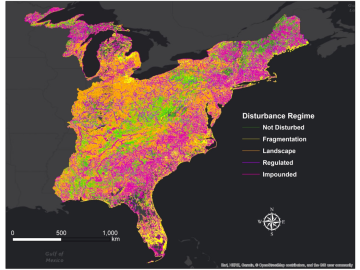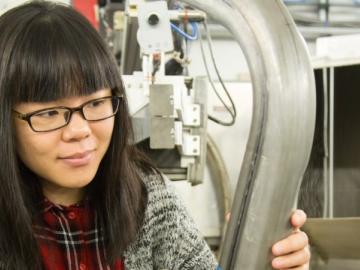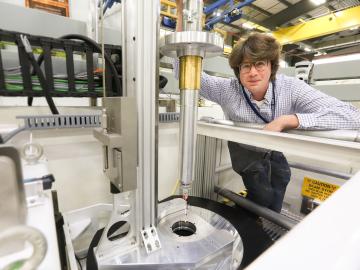
Filter News
Area of Research
- (-) Clean Energy (168)
- (-) Materials for Computing (13)
- (-) Neutron Science (72)
- Advanced Manufacturing (5)
- Biological Systems (1)
- Biology and Environment (102)
- Biology and Soft Matter (4)
- Building Technologies (2)
- Chemical and Engineering Materials (3)
- Chemistry and Physics at Interfaces (7)
- Climate and Environmental Systems (7)
- Computational Biology (1)
- Computational Chemistry (5)
- Computational Engineering (1)
- Computer Science (3)
- Data (1)
- Earth Sciences (1)
- Electricity and Smart Grid (1)
- Energy Frontier Research Centers (7)
- Fuel Cycle Science and Technology (2)
- Functional Materials for Energy (8)
- Fusion and Fission (32)
- Fusion Energy (7)
- Geographic Information Science and Technology (1)
- Isotopes (21)
- Materials (122)
- Materials Synthesis from Atoms to Systems (8)
- Materials Under Extremes (7)
- National Security (45)
- Neutron Data Analysis and Visualization (2)
- Nuclear Science and Technology (27)
- Quantum Condensed Matter (3)
- Quantum information Science (4)
- Renewable Energy (2)
- Sensors and Controls (2)
- Supercomputing (153)
- Transportation Systems (4)
News Type
News Topics
- 3-D Printing/Advanced Manufacturing (24)
- Advanced Reactors (2)
- Artificial Intelligence (6)
- Big Data (1)
- Bioenergy (12)
- Biology (5)
- Biomedical (7)
- Biotechnology (1)
- Buildings (11)
- Chemical Sciences (5)
- Clean Water (5)
- Climate Change (8)
- Composites (2)
- Computer Science (15)
- Coronavirus (9)
- Cybersecurity (5)
- Decarbonization (16)
- Energy Storage (21)
- Environment (21)
- Fossil Energy (2)
- Grid (13)
- High-Performance Computing (3)
- Machine Learning (3)
- Materials (10)
- Materials Science (13)
- Mathematics (2)
- Mercury (1)
- Microelectronics (1)
- Microscopy (4)
- Nanotechnology (6)
- National Security (2)
- Net Zero (1)
- Neutron Science (35)
- Nuclear Energy (3)
- Partnerships (4)
- Physics (1)
- Polymers (3)
- Quantum Computing (1)
- Quantum Science (2)
- Security (4)
- Simulation (1)
- Space Exploration (2)
- Summit (4)
- Sustainable Energy (14)
- Transportation (17)
Media Contacts


Oak Ridge National Laboratory scientists have developed a crucial component for a new kind of low-cost stationary battery system utilizing common materials and designed for grid-scale electricity storage. Large, economical electricity storage systems can benefit the nation’s grid ...

As leader of the RF, Communications, and Cyber-Physical Security Group at Oak Ridge National Laboratory, Kerekes heads an accelerated lab-directed research program to build virtual models of critical infrastructure systems like the power grid that can be used to develop ways to detect and repel cyber-intrusion and to make the network resilient when disruption occurs.


When Michael Starke leaves the lab each day, he continues his work, in a sense, at home. The power systems engineer is developing methods to precisely control building electrical loads—and in his off hours, he has automated his own home with upwards of 90 smart devices to manage everything from heat...

For the past six years, some 140 scientists from five institutions have traveled to the Arctic Circle and beyond to gather field data as part of the Department of Energy-sponsored NGEE Arctic project. This article gives insight into how scientists gather the measurements that inform t...

Christina Forrester’s meticulous nature is a plus for her work leading technical testing and analysis of radiological and nuclear detection devices, whether that work takes her to the Desert Southwest or to her own lab outfitted with specialized




